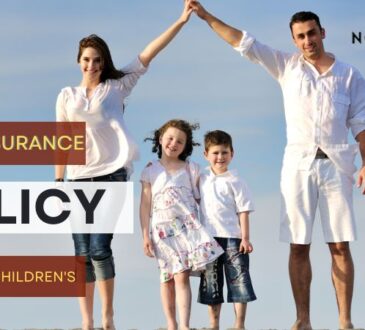
Child Insurance For Stepchildren plays a crucial role in safeguarding the financial well-being of stepchildren, providing protection and security in the face of unexpected events. In this comprehensive guide, Nonchinabr.com delve into the intricacies of child insurance for stepchildren, exploring its importance, coverage options, eligibility criteria, and key considerations for ensuring a solid financial future for these cherished family members.
What is Child Insurance For Stepchildren?

Child insurance for stepchildren refers to an insurance policy that provides coverage and financial protection for stepchildren. It is designed to offer the same benefits and safeguards as child insurance for biological or adopted children. This type of insurance helps ensure that stepchildren are financially protected in case of unfortunate events such as illness, injury, or death.
Their typically includes features such as life insurance, critical illness coverage, and accidental death and dismemberment benefits. The coverage varies depending on the specific policy and insurance provider. It helps provide financial support to the stepchild and their family during times of need, covering medical expenses, funeral costs, education expenses, and other related financial obligations.
To obtain stepchildren insurance, the policyholder (usually the biological parent or legal guardian) will need to add the stepchild as a beneficiary or insure them directly under the policy. Requirements and procedures for adding stepchildren to the policy may vary depending on the insurance provider and the specific policy terms.
It’s important to note that stepchildren insurance is typically an optional coverage and may not be automatically included in standard insurance policies. It’s advisable to consult with an insurance professional or contact the insurance company directly to understand the available options, coverage details, and any specific requirements for insuring stepchildren.
How Does Child Insurance For Stepchildren Differ From Regular Child Insurance?
It may differ from regular child insurance in a few key ways:
- Eligibility:
Regular child insurance typically covers biological or adopted children of the policyholder. In contrast, child insurance for stepchildren extends coverage to children who are stepchildren of the policyholder, meaning they are not biologically or legally adopted by the policyholder.
- Documentation and Legal Requirements:
Insuring a stepchild may require additional documentation or legal steps to establish the relationship between the policyholder and the stepchild. This may involve providing proof of marriage or legal guardianship to the insurance company.

- Consent and Involvement of Biological Parents:
Depending on the jurisdiction and the specific circumstances, the consent or involvement of the stepchild’s biological parents may be required for obtaining child insurance. This can vary based on factors such as custody arrangements and legal rights of the biological parents.
- Coverage Limitations:
Some insurance policies may have specific limitations or conditions when it comes to covering stepchildren. For example, there may be age restrictions, limitations on the coverage amount, or specific events or circumstances that trigger coverage.

- Policy Ownership:
The ownership of the child insurance policy may differ for stepchildren compared to regular child insurance. In regular child insurance, the policy is typically owned by the parent or legal guardian. However, in the case of stepchildren, the policy ownership may reside with the biological parent or legal guardian rather than the stepparent.
It’s important to note that the specific differences can vary depending on the insurance provider, the policy terms, and the applicable laws and regulations in the jurisdiction. It’s advisable to consult with an insurance professional or contact the insurance company directly to understand the specific nuances and requirements of stepchildren insurance.
Can stepchildren be covered under a parent’s existing child insurance policy?

Whether stepchildren can be covered under a parent’s existing child insurance policy depends on the specific terms and conditions of the insurance policy and the regulations of the insurance provider. In some cases, insurance policies may allow for stepchildren to be included as covered beneficiaries, while in other cases, they may not be automatically eligible for coverage.
To determine whether stepchildren can be covered, it is advisable to review the policy documents or contact the insurance provider directly. They can provide specific information regarding the eligibility criteria, any required documentation, and the process for adding stepchildren to the existing child insurance policy.
It’s important to note that insurance policies can vary, and the inclusion of stepchildren may be subject to certain conditions, such as legal guardianship or the policyholder’s marital status. Consulting with an insurance professional or directly contacting the insurance provider will help clarify the coverage options available for stepchildren under an existing child insurance policy.
Are there any additional documentation or legal requirements to consider when insuring stepchildren?

When insuring stepchildren, there may be additional documentation or legal requirements to consider. The specific requirements can vary depending on the insurance provider and the jurisdiction in which the policy is issued. Here are some common considerations:
- Proof of Relationship:
Insurance companies may require documentation to establish the relationship between the policyholder and the stepchild. This can include a marriage certificate, proof of legal guardianship, or other relevant legal documents.
- Consent from Biological Parents:
Depending on the circumstances and legal requirements, the consent of the stepchild’s biological parents may be necessary. This is particularly important if the biological parents still have legal rights or custodial rights over the child.
- Legal Guardianship:
If the stepchild is under the legal guardianship of the policyholder, the insurance company may require documentation or court orders confirming the guardianship status.
- Age Restrictions:
Some insurance policies have age restrictions for stepchildren to be eligible for coverage. The policy may specify an age limit beyond which stepchildren cannot be included in the insurance coverage.
- Notification Requirement:
It’s important to inform the insurance provider about the addition of a stepchild to the policy. Familiarize yourself with the notification process and any required forms or documentation that need to be submitted.
To ensure compliance with the specific requirements of your insurance policy and jurisdiction, it is recommended to consult with an insurance professional or contact the insurance provider directly. They can provide accurate information on the documentation and legal requirements for insuring stepchildren under the policy.
Conclusion
Child insurance for stepchildren proves to be an invaluable tool in securing the financial stability and protection of these special family members. By understanding the nuances of coverage options, eligibility requirements, and the importance of proper planning, parents and legal guardians can make informed decisions to provide comprehensive insurance coverage for their stepchildren, ensuring their well-being and peace of mind for years to come.




